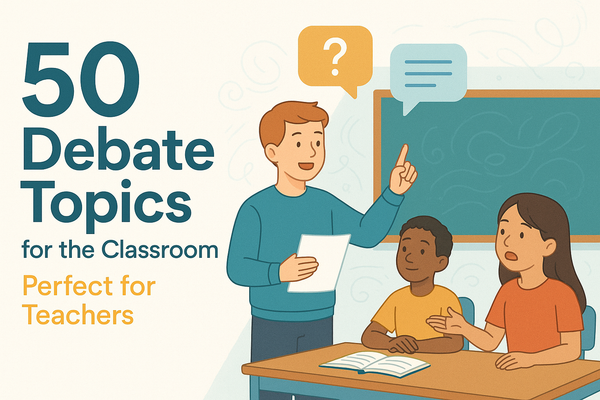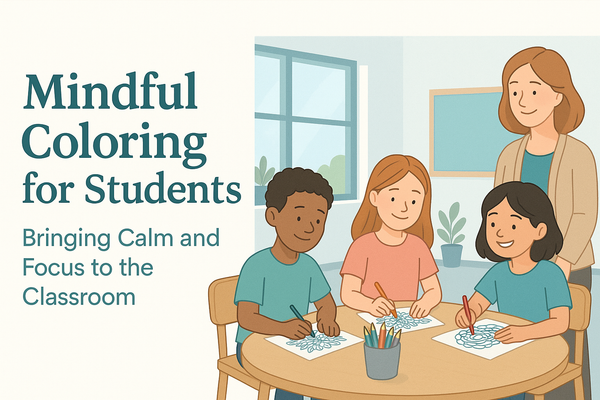Simple Tips to Help Students Tackle Maths Word Problems

If you see your students freeze after encountering math word problems, you are not alone. Many students struggle not just with numbers but with figuring out what the question is asking. Students find word problems challenging because they mix language and maths, which can be tricky for young learners.
As teachers, you may have often heard how you need to make students read the problem again or make them practise more, but these tips alone do not always help. What students really need are simple, clear strategies that help them break down the question and build their confidence step by step.
In this blog, we will share tried-and-tested tips that make solving word problems easier and less stressful for students. These ideas are designed to build strong understanding, encourage independent thinking, and, most importantly, help children feel successful when working through word problems.
Practical Tips to Help Students Deal with Word Problems
When it comes to math word problems, enhancing number recognition skills is the first step. Students do not just need more practice; they need the right kind of support. You need practical tips that can help students break down these problems in a way that makes sense to them.
So, instead of just listing strategies, let’s walk through a real example together. We will take one simple word problem suitable for Year 2 students and use it to explain each tip clearly. This way, you can see exactly how to apply each step in your classroom.
Here is the word problem we will use:
Emma has 6 red balloons and 4 blue balloons. How many balloons does she have in total?
Now, let’s explore how to guide students through solving this problem using clear, simple strategies.
Step 1: Help Students Make Sense of the Problem by Rephrasing It
The very first step to solving any word problem is making sure students truly understand what the problem is asking. Often, students get stuck not because they cannot do the maths but because they cannot quite figure out what the question means. That is where paraphrasing or rephrasing the problem in their own words can make a huge difference.
Encourage your students to restate the problem in simpler terms. They can speak it aloud or write it down using words they are comfortable with. This does not just help with understanding, it builds confidence and removes the fear that often comes with wordy questions.
Let’s apply this to our example:
Original Problem:
Emma has 6 red balloons and 4 blue balloons. How many balloons does she have in total?
Paraphrased Version:
Emma has some red balloons and some blue ones. How many balloons does she have all together?
By rephrasing the question, students are gently nudged to focus on the key parts. Emma has two groups of balloons, and we need to find the total. There is no tricky wording, no unnecessary detail, just the important facts made clearer.
This small step sets the tone for the rest of the process and gives students the confidence to move forward.
Step 2: Teach Students to Spot the Important Information in the Problem
Once students understand the general idea of the word problem, the next step is to help them focus on the key information that will actually help them solve it. Many younger students get overwhelmed by the amount of text and lose sight of what really matters. That is why identifying key details, like important numbers, action words, and what the problem is asking them to find, is such a crucial skill.
Start by teaching students how to pick out the useful parts of the problem. This includes:
- The numbers given in the problem
- The action or operation being described (e.g., are we adding, subtracting, etc.)
- What they need to find out (the actual question being asked)
A great way to help with this is to encourage the use of visual cues. Ask students to underline the numbers and circle words that give clues about the operation (for example, words like altogether, left, or in total). They can also write a short sentence at the end that tells them what they are solving for.
Let’s break this down using our example:
Original Problem:
Emma has 6 red balloons and 4 blue balloons. How many balloons does she have in total?
Key Information:
- 6 red balloons
- 4 blue balloons
- The question is asking for the total number of balloons → this is a clue that we need to add.
What to Write Down:
- Numbers: 6 and 4
- Operation: Addition (because of the phrase “in total”)
- What we are solving: Find the Total number of balloons
Visual Strategy:
Ask students to:
- Underline the numbers → 6, 4
- Circle keywords like in total
- Write a simple goal like: Find Total balloons
By training students to sort through the words and pull out the useful bits, you are helping them build a habit of clarity and focus that they can use with every word problem they face.
Step 3: Help Students Turn Words into Numbers and Symbols
Now that students have identified the key information in the problem, the next step is to turn those words into a mathematical equation. This is often where many learners feel unsure but with a little guidance, this step can become second nature.
Word problems are just stories written in everyday language, but behind the scenes, they describe a mathematical relationship. Helping students translate these words into numbers and symbols is like teaching them a new language - the language of maths.
Start With Keyword Clues
Introduce common words and what they usually mean in mathematical terms. A reference chart can be very helpful in the classroom.
Students do not need to memorise all of these at once, but they should get used to looking out for these clues in word problems.
Original Problem:
Emma has 6 red balloons and 4 blue balloons. How many balloons does she have in total?
Keyword Clue:
“Total” tells us we need to add.
Translation:
This problem becomes a simple equation:
6 + 4 = ?
Now, students can clearly see what operation is needed and how to set it up. By practising this translation step often, students will gradually learn to connect language with the maths it represents.
Encourage them to say or write out the connection:
"I see the word ‘total’, so I need to add. That is 6 + 4."
This step builds the bridge between understanding the story and doing the calculation, and it is key to becoming confident with word problems.
Step 4: Guide Students to Solve the Problem One Small Step at a Time
When students are faced with a word problem, especially one with multiple pieces of information, it can feel like too much to handle all at once. That is why one of the most effective strategies is to show them how to break the problem down into smaller, bite-sized parts. Tackling the problem step by step helps reduce confusion and builds confidence as they go.
Instead of expecting students to jump straight to the answer, encourage them to pause and ask:
“What is the first thing I need to figure out?”
Once they have solved that part, they can move on to the next.
Let’s see how this would look using our balloon example.
Problem:
Emma has 6 red balloons and 4 blue balloons. How many balloons does she have in total?
We can guide students to solve it in manageable parts like this:
- Step 1: Look at the two groups separately
Red balloons: 6
Blue balloons: 4
- Step 2: Decide what needs to be done
We need to find the total, → So we are going to add.
- Step 3: Add the two amounts
6 (red) + 4 (blue) = 10
By walking through the problem slowly, part by part, students do not feel overwhelmed. It helps them stay organised in their thinking and keeps them from rushing to a wrong answer.
Strategies and Tools to Help Your Students Master Word Problems
Beyond step-by-step breakdowns, some structured methods and hands-on tools can make a world of difference for students, especially in early grades. These strategies are simple enough to be applied daily in your classroom.
Let’s explore three essential strategies that can help students understand and solve word problems more effectively. Each method allows learners to visualise the maths, stay organised, and engage with the problem in a way that feels manageable and fun.
1. Try the CUBES Strategy for Step-by-Step Thinking
The CUBES strategy is a practical method that gives students a clear and repeatable process for approaching any word problem. Especially effective for second-grade learners, this method encourages them to slow down, think critically, and work through the problem with purpose.
Here is what each letter stands for:
- C – Circle the numbers: Students identify and circle all the numbers given in the problem.
- U – Underline the question: This helps them stay focused on what they are actually being asked to solve.
- B – Box the keywords: Important words like total, left, altogether give hints about the operation needed.
- E – Eliminate extra information: Not everything in the problem is always useful. Students learn to spot what they need to ignore.
- S – Solve and check the problem: Finally, they work out the answer and double-check their solution.
CUBES strategy to our example:
Emma has 6 red balloons and 4 blue balloons. How many balloons does she have in total?
- C: Circle the numbers → 6 and 4
- U: Underline the question → How many balloons does she have in total?
- B: Box keywords → has, in total
- E: There’s no extra information in this one, but this step becomes important in longer problems
- S: Solve it → 6 + 4 = 10 balloons
By practising this routine regularly, students begin to approach every word problem with clarity and structure. It removes the fear of “not knowing where to start” and builds a systematic habit they can carry forward to more advanced maths later on.
2. Use Drawing as a Thinking Tool
For many students, especially visual learners, a picture really is worth a thousand words. Drawing helps them “see” what is happening in the problem instead of just reading and guessing. The best part? The drawings do not need to be perfect; they are just useful.
Encourage your students to use shapes, symbols, or simple sketches to represent the key elements in the problem. When they can visualise the scenario, it becomes easier to decide which operation is needed and how to move forward.
Let’s use our balloon example again:
Emma has 6 red balloons and 4 blue balloons. How many balloons does she have in total?
- The student might draw 6 small red circles and label them "R"
- Then, draw 4 small blue circles and label them "B"
- Next, they count all the circles: 1–10
- They write the answer clearly: Emma has 10 balloons in total.
Now let’s look at a subtraction version to see how this works too:
Emma had 10 balloons. She gave 3 to her friend. How many balloons does she have now?
- Students draw 10 balloons.
- They then cross out 3 of them to show that they have been given away.
- Count how many remain: 7
- So, Emma now has 7 balloons.
You can also have your students discover essential subtraction strategies to make things easier. This hands-on method of drawing reduces stress for students who struggle with text-heavy problems. It also bridges the gap between abstract thinking and real-world understanding, helping students make the mental leap from reading to solving.
3. Make It Real with Objects
When students can touch and move objects while solving a word problem, they build a much deeper understanding of the maths involved. That is why using manipulatives in your lessons, like counters, cubes, or even classroom items, can really help your students grasp what is happening in the problem.
Why this works:
Many second-grade learners are still developing number sense and benefit from seeing quantities physically represented. Manipulatives make maths more tangible and interactive, helping students understand operations like addition and subtraction in a very concrete way.
Let’s revisit our example with manipulatives:
Emma has 6 red balloons and 4 blue balloons. How many balloons does she have in total?
You could give your student 6 red counters and 4 blue counters. Ask them to group them together and count all of them. They will physically add the two groups and find that the total is 10.
Now for a subtraction scenario:
Emma had 10 balloons. She gave 3 away. How many balloons does she have now?
Give the students 10 counters and ask them to remove 3 to represent the balloons that were given away. Count what is left: 7.
You do not need fancy tools; anything from bottle caps to paper clips can be used to model a problem. This makes the maths real and helps students connect abstract questions to concrete solutions.
Conclusion
Helping students tackle word problems is not just about getting the right answers; it is about building their confidence, nurturing critical thinking, and giving them the tools they need to approach any problem with clarity and calm. While it may seem like a small part of the math curriculum, word problems are powerful learning opportunities that mirror real-life situations, encouraging students to think logically, read carefully, and apply their knowledge practically.




